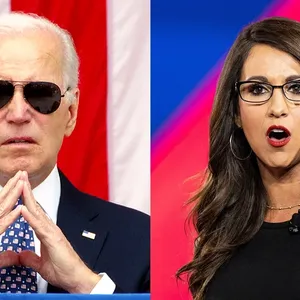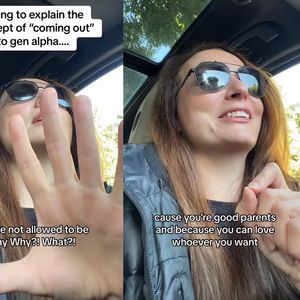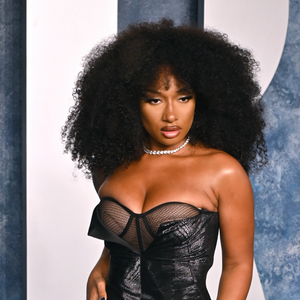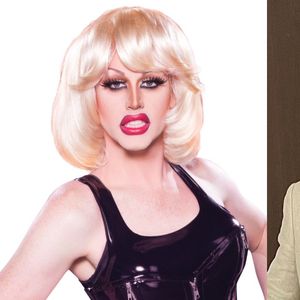CONTACTStaffCAREER OPPORTUNITIESADVERTISE WITH USPRIVACY POLICYPRIVACY PREFERENCESTERMS OF USELEGAL NOTICE
© 2024 Pride Publishing Inc.
All Rights reserved
All Rights reserved
By continuing to use our site, you agree to our Private Policy and Terms of Use.
A survey of U.S. gay men presented this week at the 14th Conference on Retroviruses and Opportunistic Infections reveals that gay men born in the 1970s (and therefore now in their 30s) knew they were gay, came out earlier, and had their first boyfriend earlier than gay men of previous generations.
But it also finds that older gay men (born in the 1940s, and therefore now in their 60s) had just as much, if not more, sex as adolescents and had it just as early.
The survey also found that younger gay men were more likely to have started their sexual adventures by having oral rather than anal sex and were much more likely to have had sex with a woman before they started having sex with men.
The researchers comment that this means that younger gay men have had a "broader early sexual repertoire," though if they count oral sex as having a broad repertoire, it begs the question as to what they think a narrow one might be.
The age-stratified survey of gay men was part of a study called the Urban Men's Health Survey, an annual quiz of gay men conducted in 15 U.S. cities. It was presented February 25-28 in Los Angeles.
Three statistics suggested that being young and gay has, if anything, become more difficult over the years. The proportion of men who said they'd been harassed at school for being gay increased from three out of five born before 1940 to four out of five born after 1970.
The number who said they'd experienced child sex abuse increased from 12% to 19%. And twice as many men born after 1970 had attempted suicide before the age of 18 compared with those born before 1940--6% versus 3%.
The survey interviewed 2,881 men who said they'd had sex with another man over the last year. It excluded, for this age analysis, the 157 who were under 25 and about 700 (a quarter of the sample) who didn't define themselves as gay. This left 2,024 men.
Their average age was 40, seven eighths of them were white, and most were born between 1940 and 1970, with 7% each born before 1940 or after 1970.
About 70% said they were HIV-negative, 20% HIV-positive, and 10% said they didn't know their status.
As you might expect, the average age at which men wondered if they were gay, decided they were, came out to others, and got serious about a boyfriend declined over the years.
For instance, men born before 1940 didn't start even wondering if they were gay till they were over 17, made the firm decision by the age of 22, and came out to family (if they did) at 25--having acquired their first serious boyfriend before coming out at the age of 23.
Men born after 1970 wondered if they were gay before they were 13, had decided they were by 17, and came out at 19 before having their first serious relationship at about 19 and a half years old.
On the other hand, just because men born in the 1940s came out to themselves and others later didn't mean they were having less sex. The number who'd had more than 25 partners before the age of 18 declined significantly from 13% of men born before 1940 to 4% of men born after 1970.
And the number whose first sex was with another man declined from 80% of those born before 1940 to 65% of those born after 1970. Anal sex remained just as fashionable over time, but the proportion whose first sex was oral sex increased from 48% of those born before 1940 to 72% of those born after 1970.
Of course the latter would be starting to have sex in the late 1980s and early '90s, when the fear of AIDS was at its peak.
Another branch of the same survey, which included men under 25, found that between 5% and 11% of gay men in the 15 cities who'd previously taken an HIV test believed themselves to be negative when they were in fact positive.
More than 90% of the men had taken an HIV test at some point, and two thirds of them had been tested in the last year--a far higher proportion than in Europe.
Of the ones who had been tested, 79% said they were negative, 15% positive, and 6% said they hadn't dared go back for their result.
When the men were given an oral HIV test, it turned out that in fact 26% were positive, with nearly half of these (12% of all men who'd ever been tested) being newly diagnosed. The federal Centers for Disease Control and Prevention has recommended that in the light of these findings, gay men should get tested for HIV at least once a year.
This was underlined by a third study from New York which found that gay men have by far the highest risk of acquiring new HIV infections of any group.
By using an assay that detects recent infection in people coming to get tested at New York City's STD clinics, a group from the New York Public Health Department found that HIV incidence--the proportion of people who get new infections--was 3% a year in gay men, 1.7% a year in injecting drug users, and 0.25% a year in heterosexuals.
The peak age for infection was 35-39. Black people were still the ethnic group most likely to acquire HIV, but their incidence rate had declined from 0.7% a year in 2000 to 0.28% in 2004 and was now not greatly in excess of that seen in Latinos, though still twice the rate in white people.
Incidence had declined in all groups except gay men, where an initial decline from 3.8% a year in 2000 hadn't been sustained and had stayed at 3% a year. In other words, one in 35 gay New Yorkers a year becomes HIV-positive. (Gus Cairns, Gay.com/U.K.)
Want more breaking equality news & trending entertainment stories?
Check out our NEW 24/7 streaming service: the Advocate Channel!
Download the Advocate Channel App for your mobile phone and your favorite streaming device!
From our Sponsors
Most Popular
Here Are Our 2024 Election Predictions. Will They Come True?
November 07 2023 1:46 PM
Meet all 37 of the queer women in this season's WNBA
April 17 2024 11:24 AM
17 Celebs Who Are Out & Proud of Their Trans & Nonbinary Kids
November 30 2023 10:41 AM
Here Are the 15 Most LGBTQ-Friendly Cities in the U.S.
November 01 2023 5:09 PM
Which State Is the Queerest? These Are the States With the Most LGBTQ+ People
December 11 2023 10:00 AM
These 27 Senate Hearing Room Gay Sex Jokes Are Truly Exquisite
December 17 2023 3:33 PM
10 Cheeky and Homoerotic Photos From Bob Mizer's Nude Films
November 18 2023 10:05 PM
42 Flaming Hot Photos From 2024's Australian Firefighters Calendar
November 10 2023 6:08 PM
These Are the 5 States With the Smallest Percentage of LGBTQ+ People
December 13 2023 9:15 AM
Here are the 15 gayest travel destinations in the world: report
March 26 2024 9:23 AM
Watch Now: The Daily
Trending stories from our video partner Advocate Channel.
For more videos and shows go to advocatechannel.com.
Trending stories from our video partner Advocate Channel.
For more videos and shows go to advocatechannel.com.
Latest Stories
Over 90% of trans youth live in states pushing anti-trans legislation: report
April 23 2024 10:08 PM
George Santos pulls out of New York congressional race
April 23 2024 7:04 PM
Biden will hammer Trump over abortion bans in Florida speech
April 23 2024 5:00 AM
Tristan Snell, who brought down Trump University, sees conviction in hush money case
April 22 2024 7:36 PM
Joe Biden admin marks Earth Day with major environmental initiatives
April 22 2024 4:18 PM
Texas Gov. Greg Abbott: 'We want to end' trans and gender nonconforming teachers
April 22 2024 4:13 PM
Nonbinary 17-year-old killed two years after being reported missing
April 22 2024 3:46 PM
Trending stories
Most Recent
Recommended Stories for You



















































































